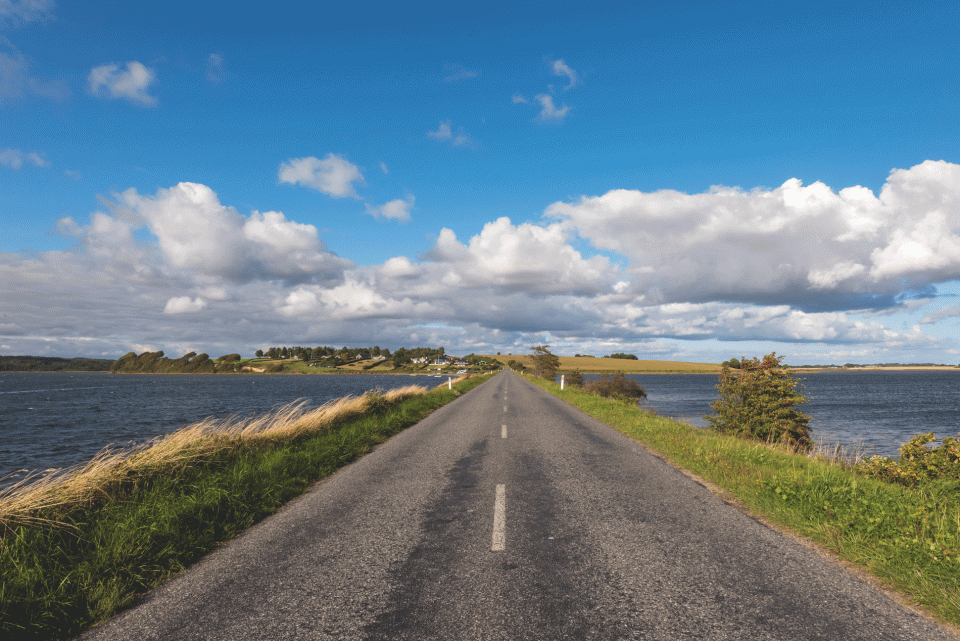We pass a mound of smashed shells that marks the drop zone for seabirds dashing open mussels, and stop briefly at a collection of pink boulders apparently arranged (it takes some squinting) in the shape of a ship. This, I learn from an information board, was the grave of a wealthy Viking; a buckle was found that has been dated to 860 AD. Imagine the stories it could tell.
However, Bjarne and Kristian aren’t to be diverted. Galumphing along in waders up to our chests, we cross a dune, descend to the beach and walk straight into the sea. Fat mussels lie among the pebbles and the occasional jellyfish ghosts gelatinously beneath the surface, but my guides have eyes for one only thing: seaweed. Their passion for the stuff knows no bounds. They’re loopy about it.
“Ah, now this is bladder wrack,” Bjarne says, laying it out carefully across his palm as if it were a pearl necklace rather than a slimy brown strand covered in what look like tiny testicles. “The air sacks keep it afloat so it gets lots of sunlight.” “Here’s some toothed wrack,” Kristian interjects from nearby, bringing over a jagged-edged seaweed the colour of Christmas trees. “That’s the classic.” “Sugar kelp!” calls Bjarne, holding a flat piece aloft like a champion’s trophy. “Irish moss!” counters Kristian, waving a spiky specimen.
And so the seaweed ping-pong continues, a game that could last some time, I realise, when Bjarne announces that Denmark has around 400 different species. But it’s impossible not to be swept up in their enthusiasm. Seaweed is packed with 3,500 bioactive ingredients that allow it to survive extremes of weather and pollution, Kristian says, and these can be harnessed in all sorts of ways. It’s an excellent fertiliser since it combats viruses and fungi, and can be used in sun cream to protect against UV rays. Bjarne and Kristian are trialling a seaweed animal feed that might reduce the mortality rate in piglets, and making ingredients for the food industry to replace artificial preservatives. Before the hour is out, I’ve discovered that seaweed can improve everything from roofing materials to toothpaste. I now know that cultivating it can save the planet, because seaweed retains up to 15 times the carbon dioxide of land plants. The potential seems endless. “Someone rang yesterday to ask if we could make sunglasses out of seaweed,” Bjarne declares with gusto. “I said ‘Of course we can.’ We really can!”
The seaweed safari concludes at Bjarne’s renovated farmhouse. The former stable block has been converted into Nordisk Tang, a shop for seaweed products, many of them created in their factory near Aarhus. Shelves are stacked with jars of seaweed mustard, seaweed salt and various seaweed spices; there’s seaweed scrub for your face, seaweed moisturisers, and bottles of rum and brandy made from bladder wrack.


